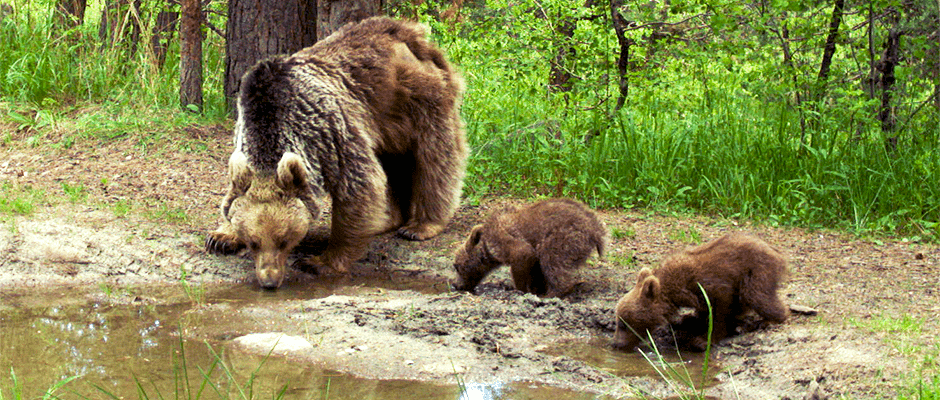Share this article
Student research project: Large carnivores surviving on unusual prey
Despite the negative impacts that people have on natural ecosystems, some wildlife species are surviving on the expanded menus that humans offer them. In particular, large carnivores in landscapes altered by humans may rely on livestock, trash and other food sources rather than natural prey, according to research in eastern Turkey by Mark Chynoweth, a PhD student at the University of Utah. Chynoweth won an honorable mention in the student poster session at the TWS Annual Conference in Raleigh, N.C., held last October.
Chynoweth and his fellow researchers set up camera traps in the Sarikamis-Allahuekber Mountains National Park and an adjacent forest of Scots pine (Pinus sylvestris L.) to document large carnivores and predict where they occurred. The team put out the camera traps for at least 90 days at a time every summer from 2009 to 2016, capturing more than 50,000 pictures over 10,000 days.
“We’re trying to understand some basic ecology about carnivores in eastern Turkey, an understudied part of the world,” Chynoweth said of his doctoral project, which also involves GPS collars and fecal genetics. He plans to use his research to guide efforts to protect more habitat and designate Turkey’s first protected wildlife corridor.
While humans and cattle dominated the landscape, the camera traps also captured 12 species of wild mammals, including Eurasian brown bears (Ursus arctos arctos), gray wolves (Canis lupus) and Eurasian lynx (Lynx lynx). The cameras rarely caught natural prey species. Only wild boar (Sus scrofa) presented enough data for modeling. From these results, Chynoweth’s group concluded that large carnivores can persist without substantial numbers of natural prey in human-dominated landscapes.
“The habitat is heavily degraded, so we need more restoration efforts, but also increased protected area on both sides of the established wildlife corridor, so habitat will support natural prey species and hopefully reduce human-wildlife conflict,” he said.
Moving forward, Chynoweth aims to estimate carnivore populations. To do so, he and his colleagues have been collecting scat samples for genetic analysis.
Chynoweth collaborated with a local environmental nonprofit called the Kuzeydoga Society, the University of Utah, University of Zurich in Switzerland and Zagreb University in Croatia to conduct his study. During his 18 months in the field, he ran into an elusive Eurasian lynx while searching for a collared wolf and into unrelentingly hospitable shepherds who cajoled him into drinking countless cups of tea.
Chynoweth, who also attended the 2010 TWS Annual Conference in Hawaii, brought an undergraduate from his research lab, a member of the Utah and student chapters, to Raleigh for her first-ever conference.
“I had a great experience and was able to talk to a lot of people and potential employers,” said Chynoweth, a TWS member active in the Utah State Chapter. “I was excited to share my work with fellow wildlife biologists, and it was an unexpected surprise to get the honorable mention.”
Header Image: A mother bear and her two cubs stop for a drink in Sarikamis Forest, eastern Turkey. ©Mark Chynoweth








